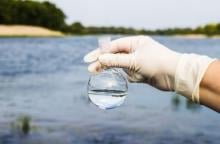Case Studies, Environmental, Academic, PFAS
/ Organomation
Laboratories around the globe are using US EPA methods 533, 537, and 537.1 to analyze finished drinking water from groundwater and surface water sources for per- and polyfluoroalkyl substances (PFAS).
PFAS are “highly persistent to natural degradation” and “have been found in more than 90% of all European rivers and have also been detected in drinking water, which is one of the potential exposure pathways to humans,” according to a report by the Swedish Environmental Protection Agency.
PFASs can be found in consumer products and industrial processes, such as firefighting foam, waterproof clothing, inks, stain resistant coatings on clothing and rugs. PFAS are resistant to heat, oils, stains, grease, and water—properties which contribute to their persistence in the environment. Studies have shown PFAS to have potential effects on the ecosystem and human health.
Many communities around the word, such as in Sweden, have taken steps to monitor PFAS by analyzing water samples. Researchers at the Swedish University of Agricultural Sciences (SLU) measured levels of PFAS in 502 samples from Swedish groundwater, surface water, sewage treatment plant effluents and landfill leachates.
Their method consisted of the following steps:
All water samples were filtered through glass fibre filters (Whatman™ Glass Microfiber Filters GF/C™, 47 mm diameter, 1.2 μm). The solid phase extraction (SPE) was carried out using Oasis® WAX 6 cc cartridges (6 cm3 , 500 mg, 60 μm, Waters, Massachusetts, USA). Before extraction, the cartridges were preconditioned with 4 mL 0.1% ammonium hydroxide, 4 mL methanol and 4 mL Millipore water. The samples were spiked with 100 μL IS mixture (c = 20 pg μL -1 ), and each loaded into one of the reservoirs. The flow was regulated to a flow of one drop per second. After loading (~0.5 L), the cartridges were washed with 4 mL of 25 mM ammonium acetate buffer (pH 4) and dried by centrifugation for 2 minutes at 3000 rpm. The cartridges were then eluted into 15 mL PP-tubes by adding 6 mL methanol, followed by 6 mL 0.1% ammonium hydroxide in methanol. The samples were placed under nitrogen evaporation (N-EVAP™ 112) to concentrate the sample to 0.5 mL using a gentle stream of nitrogen gas. Finally, the samples were analyzed using high performance liquid chromatography-mass spectrophotometry (HPLCMS/MS).
Check out the full analysis text from the Swedish EPA for more information.
SLU’s study found at least one form of PFASs in 449 of the 502 water sample. The average PFASs in all samples was 91 ngL-1. The average concentrations of PFAS in drinking water was 8.4 ng L-1
As more laboratories begin using US EPA Method 533, 537, and 537.1 to analyze PFAS in water, Organomation’s Teflon-free 24 position N-EVAP can be used to concentrate samples prior to use in HPLCMS/MS.
Contact an Organomation sales technician for a quote on a Teflon free nitrogen blowdown evaporator.
→ Next: PFAS Sample Preparation: The Definitive Guide
→ Next: Preparing Samples for HPLC-MS/MS Analysis
Reference:
SLU. (2016). Vatten och miljö: (Report No: 2016:2.). Swedish Environmental Protection Agency.
